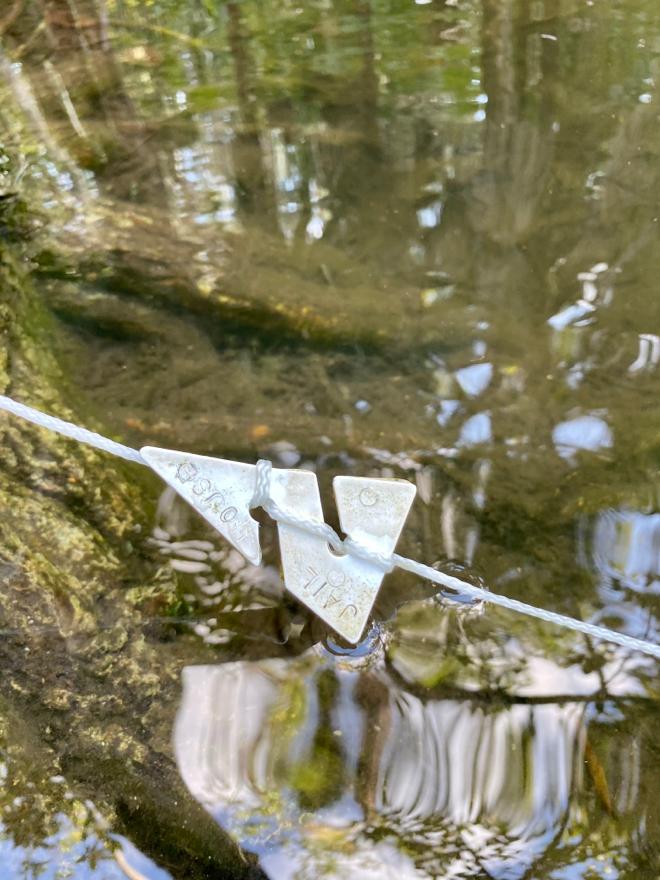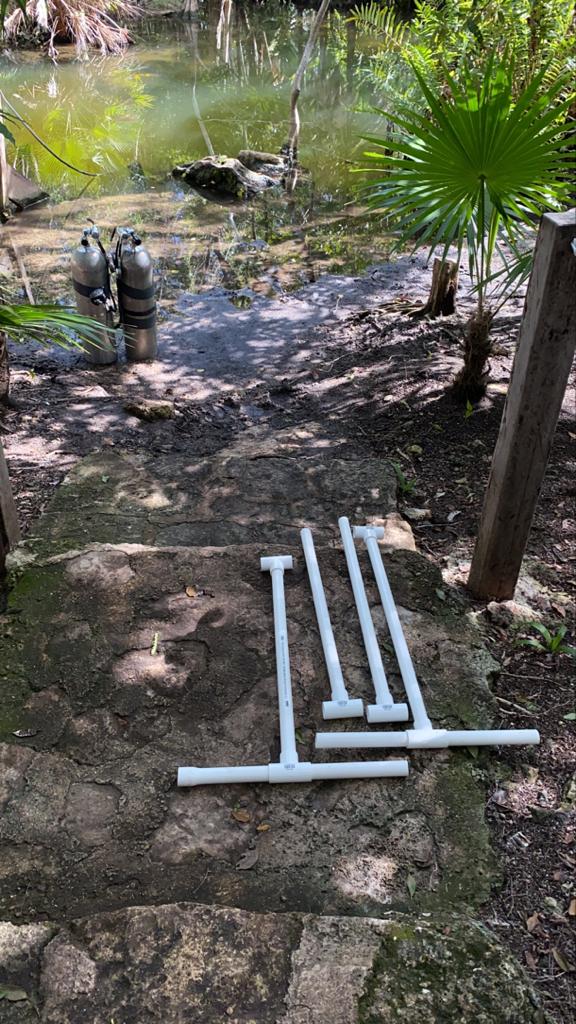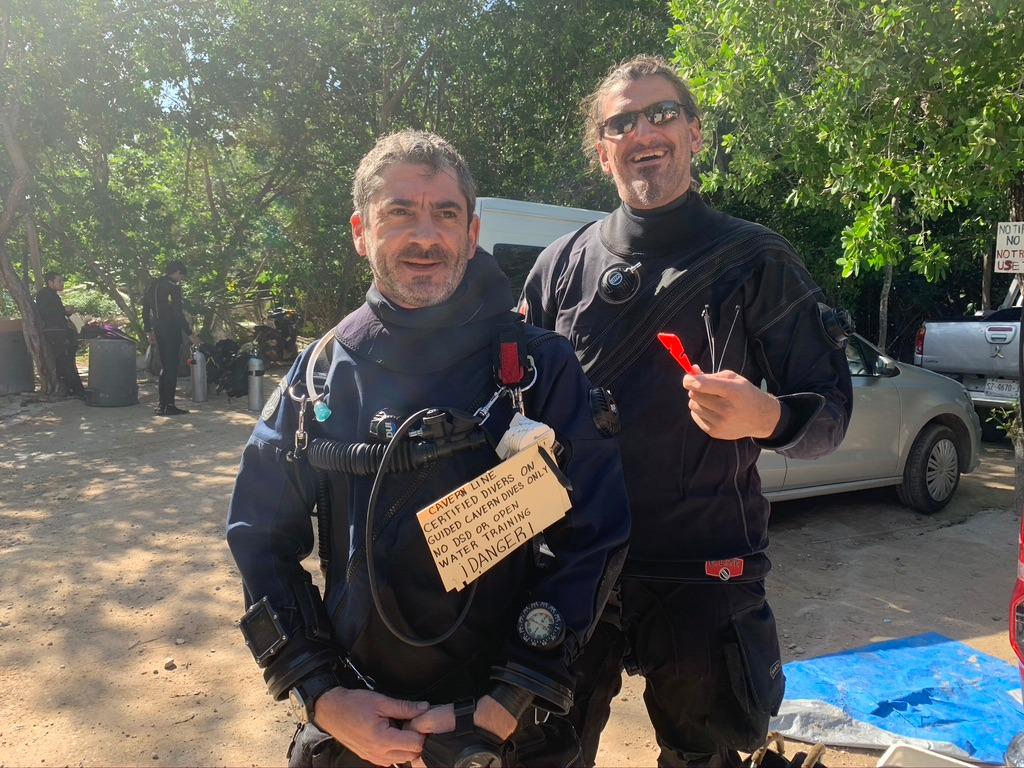In these crazy coronavirus times here at ProTec we are taking the chance to catch up on some overdue articles. So here is the first of a few little reads for you to enjoy while things are slow.
As many readers know, the placement of cave lines and the way they are marked is a very divisive topic! With a large instructor community here in Quintana Roo made up of many different backgrounds, training organisations and differing philosophies this has in the past meant many people just did what they wanted unilaterally. Recently, here in Quintana Roo cave instructors have formalised a process and set up a committee to make changes to cave lines in a comprehensive and safe manner.
Often when guiding cave divers or discussing navigation when teaching full cave courses I try to give an overview of the way that caves are marked and lined here in Mexico, and some of the differences compared to other places I have been cave diving – Australia, Florida, Sardinia, France, Madagascar. For better or worse we often get to the many exceptions and inconsistencies here in Mexico…but this is slowly going to change!

Historically, line committees have not been an effective way forward for cave marking decisions to be made. Different perspectives, personality clashes, or people not feeling included in the process have prevented this from working in the past. Since 2017 a group of cave diving instructors has been meeting with the goal “of structuring and unifying the rules of diving in cenotes, with particular emphasis on safety and conservation”.
This came about following discussions between a group of instructors from Cancun, Puerto Morelos, Playa del Carmen and Tulum on guided cavern experiences. It was decided that a group was needed to streamline the cavern guide recognition process and standardise the guided cavern experiences. The group was named CREER (Comité Regional de Espeleobuceo, Ecología y Regulación). CREER also has representatives from other local diving organisations such as BUCEMA and APSA.
As part of this, under the banner of CREER, a line committee has been developed. The committee set about creating a system to implement and discuss changes to cave lines. Before any decisions could take place there was a need to see if there was local support for having a committee and if there was, decide how this would work. The local community did vote in support of the initiative and it was decided that there would be a group of moderators voted in – ProTec’s very own Kim Davidsson, Alex Alvarez, Natalie Gibb, Luis Leal, Lanny Vogel, Vicente Fito and Vincent Rouquette-Cathala, were elected to the committee. The moderators are in charge of the ‘running’ of the votes and do not have any more say than other instructors.
It was then decided that the criteria to participate in the voting would be limited to those who are Full Cave instructors with legal residency and are active in Quintana Roo for at least 8 months per year as these instructors will have the best knowledge of the local conditions, training and caves. To ensure that it is inclusive, all proposed votes are advertised in Spanish and English via a private Facebook group where discussion on the vote can occur before the voting takes place. The voting is then facilitated through the SurveyMonkey website. Using these technologies means that decisions can be made remotely without the committee members needing to get together.

One of the biggest differences between Mexican and Floridian caves is the type of line used. Many of the popular Floridian caves at least begin with golden kernmantle line. So this was put up to the community. The votes were tallied and the results were released early 2019. So caverns, where guided recreational cavern tours take place, will be gold Kernmantle Line. High-traffic caves and designated training caves are to be lined with #24 braided white line. And other caves can be twisted or braided white line #18, #21 or # 24 as seems fit. Expect to see these changes roll out as line repairs take place.
As many of you know the distance between lines can be dangerous or difficult. Dangerous because if the lines are placed too close to one another, such as a reach jump, a diver may cross to another line by accident while checking a gauge or in a moment of distraction. This shouldn’t be a problem when diving as a team with good awareness and communication, but if the lines were further apart the chances for a mistake would decrease. Which brings me to the jumps that are so far away from the starting line that divers nearly need to bring a reel to find them. Now some of these other lines have been placed this way for safety or conservation which is fair enough but there has been very little consistency. This is changing with another recent vote. It was voted that jumps in caves should have a minimum distance between lines of 2m (6 ft) and a maximum of 10m (30ft). Jumps should be marked with an arrow, unless there is a good reason not to, such as for cave conservation, preservation of a scientific project or ongoing exploration.

It is still early days, but some of the agreed on changes are being incrementally made as cave lines need replacing. One area where this is also going to be seen is in a new system for the guided recreational cavern experience dives. Some guidelines around the process for guide registration and the cavern guidelines themselves – Tak Bi Ha, Carwash and Casa Cenote have been adjusted for safety. In the works are ideas for a comprehensive trial of a standardised cave marking system for the caves in the area. Although this trial will wait until the global situation goes back to normal.
You can report sections of a cave where a line needs to be repaired, make suggestions for changes or just follow the votes and updates to the cave lines at http://creerlineas.com/
Safe and happy diving!
Article written by Skanda Coffield-Feith
